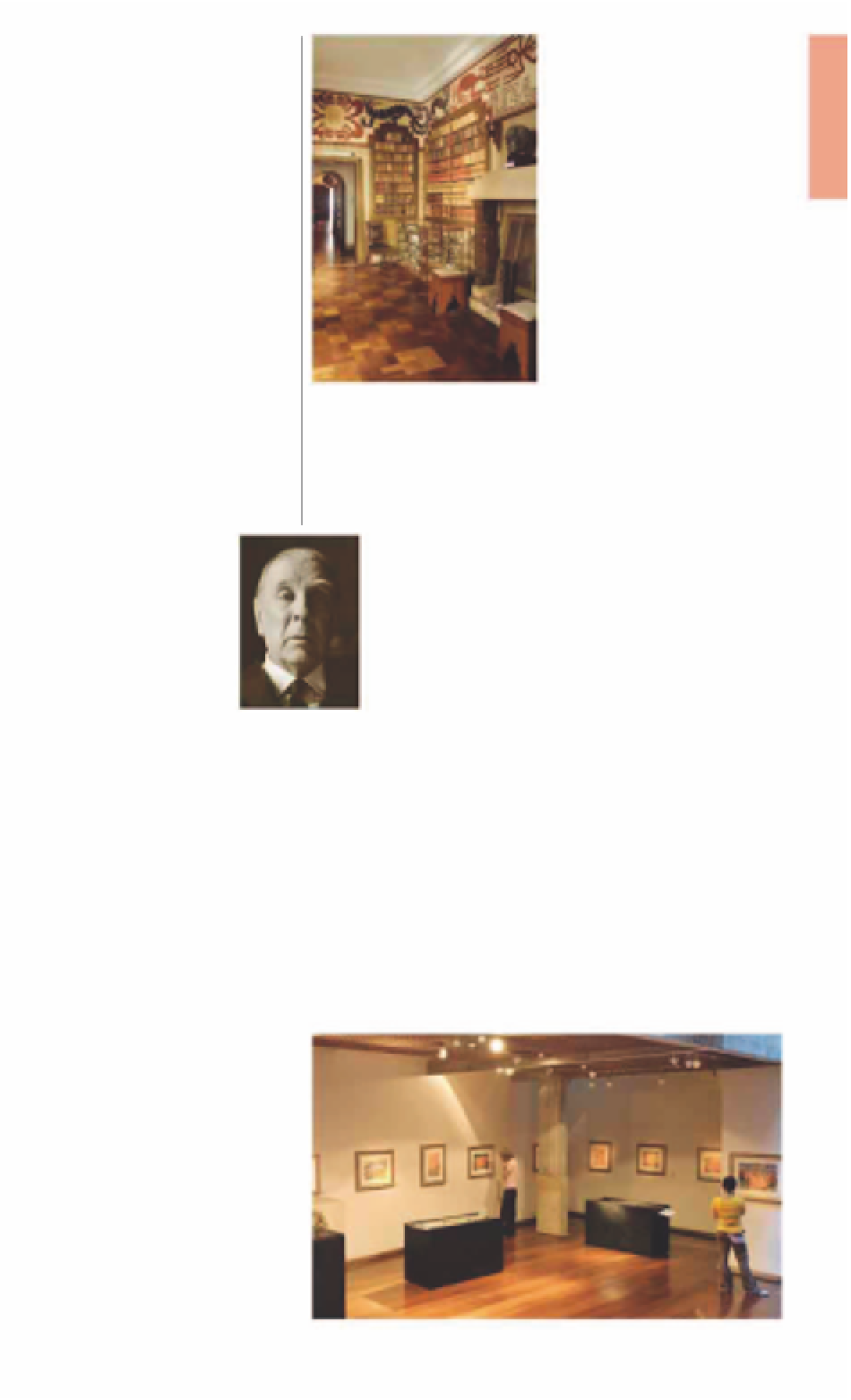Travel Reference
In-Depth Information
8
Biblioteca
Nacional
Agüero 2502.
City Map
2 B2.
Te l
(011) 4808-6000.
@
60, 95, 130.
n
photo ID required for entry.
Open
Feb-Dec: 9am−9pm Mon−Fri,
noon−7pm Sat & Sun.
Closed
Jan.
8
3pm Mon, Tue, & Thu.
7
-
∑
bn.gov.ar
One of the largest libraries in
the Americas, Argentina's
Biblioteca Nacional houses a
vast collection exceeding two
million volumes. Books, journals,
and important historical
manuscripts are stored in its
huge underground vaults. These
include a first edition of
Don
Quixote,
the personal literary
collection of General Belgrano,
and a 1455 Gutenberg Bible.
The library's most treasured
possessions are books
that were printed
before 1501. Among
these pieces are works
by St. Augustine,
Dante, and Cicero.
The building itself is
none too glamorous;
built on the site of the
palace where the
Peróns lived, it is a
T-shaped slab of
poured concrete that
flaunts its functionality in classic
Brutalist style. Architecturally
very popular when conceived in
the 1960s, the look was slightly
dated by the time it finally
opened to the public in 1992.
The position of library director
has been held by novelist José
Marmol, historian Paul Groussac,
and, most famously, author
Jorge Luis Borges, all of whom
went blind during their terms.
fascinating window not
only into the mind, but also
into the lifestyle of a brilliant
writer-scholar.
0
Museo Xul Solar
Calle Laprida 1212.
City Map
2 A3.
Te l
(011) 4824-3302.
Agüero.
@
39, 68, 152.
Open
noon−8pm Tue−Fri,
noon−7pm Sat.
&
8
4pm Tue-Thu,
3:30pm Sat (by prior arrangement in
English; call ahead to book).
7
^
=
∑
xulsolar.org.ar
Once the residence of the
19th-century porteño artist
Xul Solar, this 20th-century
town house has been converted
into the excellent Museo Xul
Solar. Described by Jorge Luis
Borges as “one of the most
singular events of our time,” Xul
Solar was an eccentric visionary.
On display at the museum are
his otherwordly paintings, done
mainly in watercolor and
tempera. His art seems to be
a blend of ideas drawn from
various sources, such as
Hieronymus Bosch, William
Blake, and Jules Verne, while at
the same time being entirely
original. The cryptic landscapes
he depicts are inhabited by
angels, demons, and jesters,
flying reptiles and machines,
ladders that lead nowhere,
and sphinxes restyled as cave
paintings. Solar takes the
viewer through a very bizarre
looking-glass world.
Apart from these paintings,
the museum contains a range
of equally bizarre objects from
Solar's collection. These include
quasi-scientific instruments,
masks, and sculptures.
The personal library of Ricardo Rojas
decorated with Inca symbols
was donated to the country
by his widow and opened
as a museum in 1958. Rojas
remained fascinated
by the relationship
between pre-
Columbian and
colonial America,
which he conceived
as a dialogue as well
as a clash of cultures.
Built with a mix of
Spanish and Inca
styles, the house was
designed to embody
this doctrine. This
is particularly evident in
the patio and cloisters, where
the columns are decorated
with various traditional Inca
symbols. The façade mimics
Casa Histórica in Tucumán
city. Rojas's furnishings and
household objects have also
been well preserved, along
with his personal library, which
comprises more than 20,000
volumes. The museum is a
Literary icon
Jorge Luis Borges
9
Museo Casa de
Ricardo Rojas
Calle Charcas 2837.
City Map
2 B3.
Te l
(011) 4824-4038.
Agüero.
@
39, 68, 152.
Open
11am−7pm
Tue-Sun.
8
on request.
7
This beautiful dwelling, set
rather incongruously amid the
residential high-rises of Barrio
Norte, was the home of the
notable writer and pedagogue
Ricardo Rojas from 1929 until
his death in 1957. The house
Display of Xul Solar's eccentric artwork at the Museo Xul Solar




































